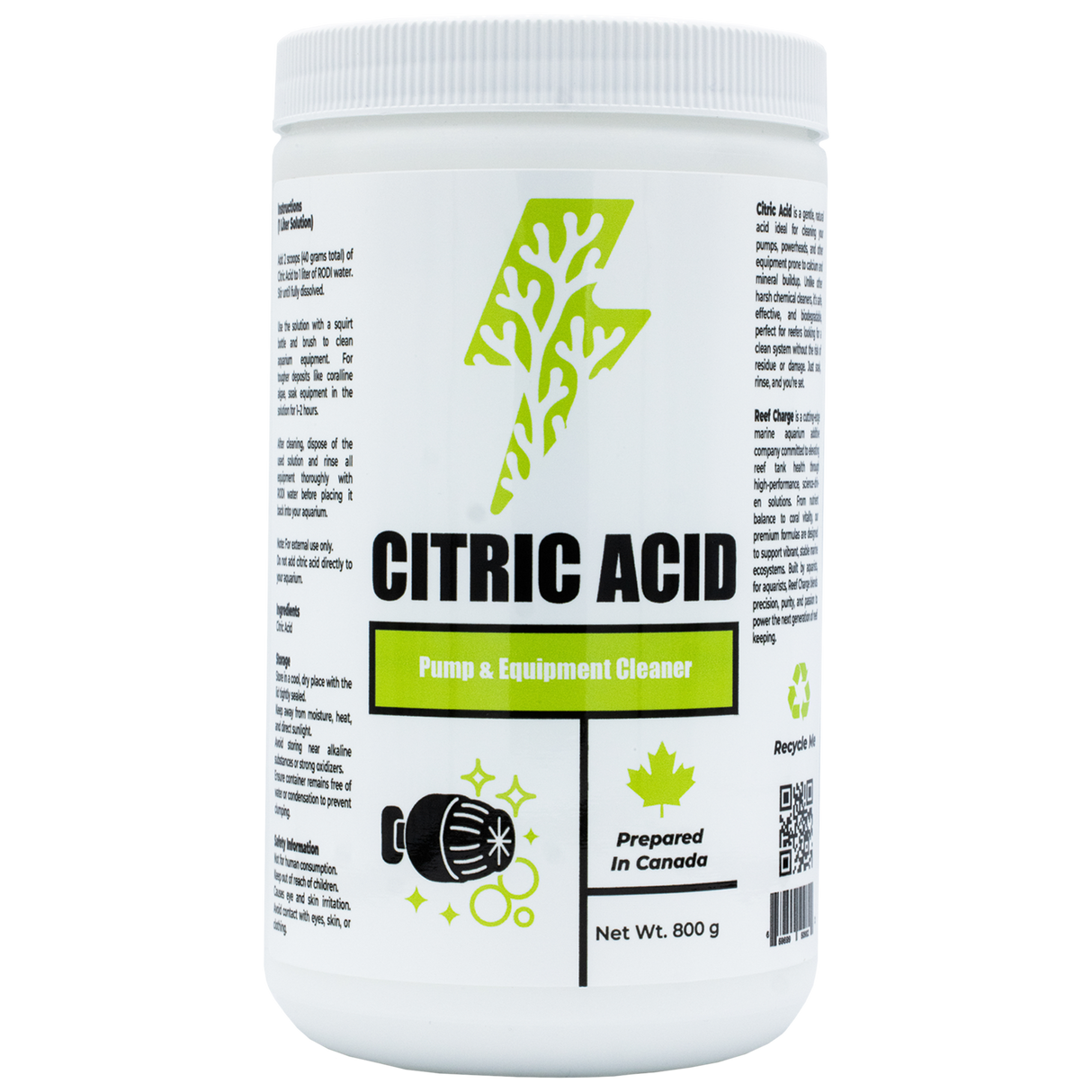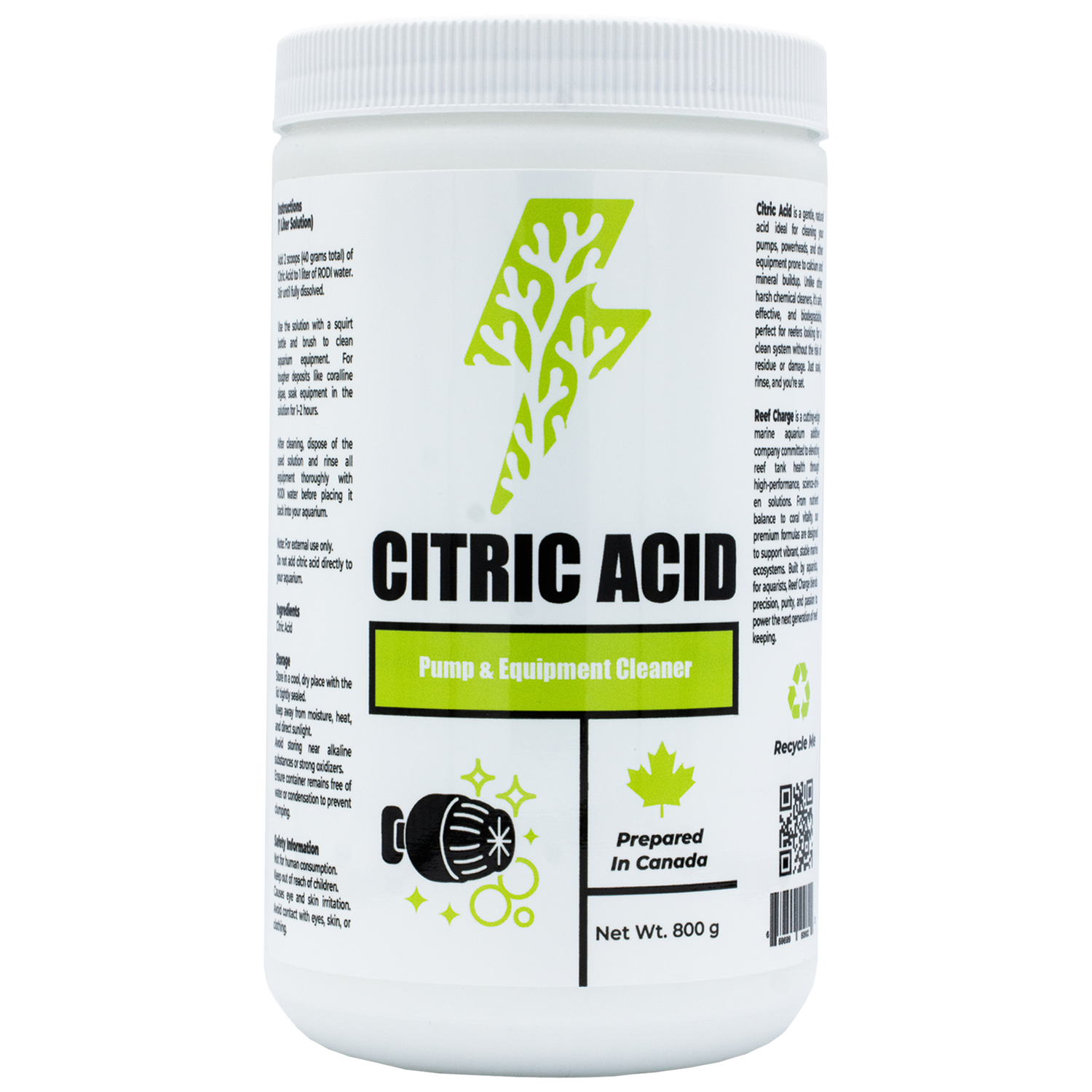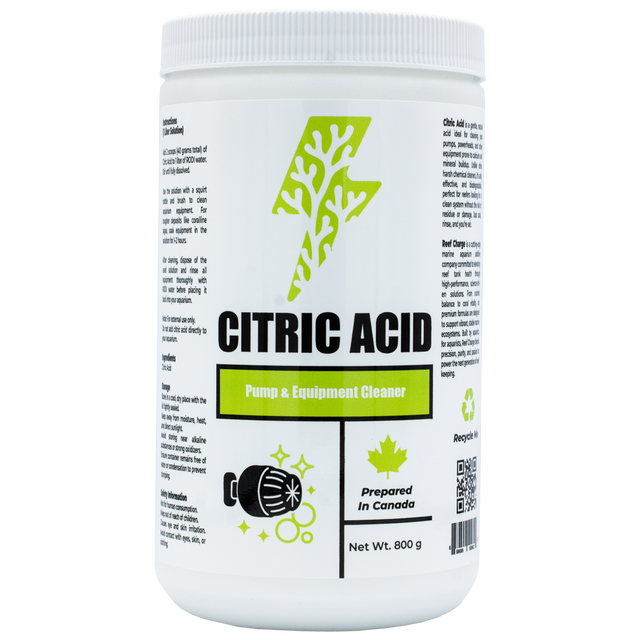Citric Acid | Pump & Equipment Cleaner
Citric Acid | Pump & Equipment Cleaner - 800 g is backordered and will ship as soon as it is back in stock.
Couldn't load pickup availability
Description
Description
Pump & Equipment Cleaner
Citric Acid is a gentle, natural acid ideal for cleaning your pumps, powerheads, and other equipment prone to calcium and mineral buildup. Unlike other harsh chemical cleaners, it’s safe, effective, and biodegradable, perfect for reefers looking for a clean system without the risk of residue or damage. Just soak, rinse, and you’re set.
Instructions (1 Litre Solution)
Add 2 scoops (40 grams total) of Citric Acid to 1 litre of RODI water. Stir until fully dissolved. Use the solution with a squirt bottle and brush to clean aquarium equipment. For tougher deposits like coralline algae, soak equipment in the solution for 1–2 hours. After cleaning, dispose of the used solution and rinse all equipment thoroughly with RODI water before placing it back into your aquarium.
Note: For external use only. Do not add citric acid directly to your aquarium.
Ingredients
Citric Acid
Storage
Store in a cool, dry place with the lid tightly sealed. Keep away from moisture, heat, and direct sunlight. Avoid storing near alkaline substances or strong oxidizers. Ensure container remains free of water or condensation to prevent clumping.
Safety Information
- Not for human consumption.
- Keep out of reach of children.
- Causes eye and skin irritation.
- Avoid contact with eyes, skin, or clothing.
Dosing Calculator
Dosing Calculator

Reef Charge Dosing Calculator
Payment & Security
Payment methods
Your payment information is processed securely. We do not store credit card details nor have access to your credit card information.










